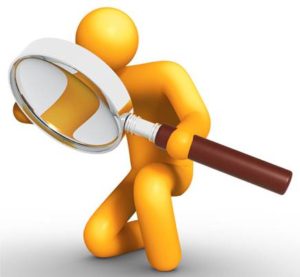The Buyers Journey
What is the Buyers Journey and why is it important to us as marketers and business owners?
The Buyers Journey consists of the 5 stages that a person goes through when purchasing a product or service. Based on the purchase, the journey could last a matter of minutes or it could last months but they are always there. Sometimes we move through the stages subconsciously, sometimes consciously with a lot of thought.
So, what are they?
- Awareness – We step into the awareness stage when a problem arises that we need a solution to. We think of the products or services we are aware of that can solve this problem.
- Interest – We begin our research, we narrow down our options and start searching for a little more information.
- Consideration – We’ve narrowed our search down to 2 or 3 options and now we do our deeper comparisons of these final options.
- Conversion – We go ahead with our final decision. Lock it in!
- Retention – This phase is the big opportunity for a business to build a brand champion, someone who will keep coming back and will tell other people about the business. This is a phase so many businesses over look but it is super important.
Because we need to use specific language and a specific message for each phase. Remember when I said traditional marketing was a broad message to a mass amount of people but digital marketing should be more like one on one conversations? This is where that begins, putting out a specific message to a targeted audience. To do this we need to know what the phases of the buying cycle are and also what our Buyer Personas are, I’ll talk about them in the next instalment so tune in for that one too!
During the awareness phase, people are realising they have a problem that they need to solve, it could be that their hair goes frizzy on a humid day or that their car is making a weird noise or that their neck hurts. Could be anything. So, at this point, this buyer is not going to respond to an ad about the specific ingredients of a product or a buy now deal, they just aren’t ready. In the awareness phase educational content will work best. Think blog posts about these problems and how to solve them, what to use. You can write them yourself or you can share content from other sources but the point here is you want to be providing free content people can find that will provide them with useful information, this will also help position you and your brand as experts on the topic and this will instil trust in your audience. From a search engine optimization point of view Google loves sites who regularly add content to their sites and will love your site even more if it is unique content that you’ve created. So start writing blogs, then you can take small extracts out of those blogs to make 4 Twitter posts, 3 Facebook updates and a couple of captions for some Instagram posts. Having them all link back to the blog, this will drive traffic.
The interest phase will most likely include a combination of information gathering from blogs and other sources as well as some surface level research on some of the top brands. A buyer will quickly decide if a brand or company’s values  align with ours, generally if they don’t then they are crossed off the list. For this phase we want to make sure our websites are mobile friendly! Number one for a website these days. Secondly, we want our users to be able to get a feel for who we are and what we stand for as a brand. If people feel that your company believes in what they believe in they will be more likely to connect with you, we need to humanize our brands, people want to connect with people. Not companies. Let them know what makes you, your brand and your company different from your competitors. People will also be looking for your online reviews and feedback that comes from other customers, the reviews can be extremely powerful in keeping someone interested or driving them away if there are some bad reviews. This is why the fifth phase, retention is so important, if you can get your regular customers to write about why they use your brand or product, what their problem was and how you solved it, you will be able to forge more trust in your current client base but also your prospective client base.
align with ours, generally if they don’t then they are crossed off the list. For this phase we want to make sure our websites are mobile friendly! Number one for a website these days. Secondly, we want our users to be able to get a feel for who we are and what we stand for as a brand. If people feel that your company believes in what they believe in they will be more likely to connect with you, we need to humanize our brands, people want to connect with people. Not companies. Let them know what makes you, your brand and your company different from your competitors. People will also be looking for your online reviews and feedback that comes from other customers, the reviews can be extremely powerful in keeping someone interested or driving them away if there are some bad reviews. This is why the fifth phase, retention is so important, if you can get your regular customers to write about why they use your brand or product, what their problem was and how you solved it, you will be able to forge more trust in your current client base but also your prospective client base.
The consideration phase is where things get a little more serious. Where people will do more specific comparisons between their top choices. Here they will be spending time on the product or service page reading the whole thing. So, we need to continue to show them why your product or brand stands out above the rest. This is where some paid search advertising can really help swing them towards you. The repetition or seeing a known product or brand at the top of their google results keeps you front of mind and keeps them heading to your sites and pages and sometimes in this phase a special offer or deal might just be enough to get them to commit. They will read more of the user reviews on your products or pages so make sure you always keep an eye on them and if there is any negative feedback, address it straight away so people can see you pay attention, you listen and you respond to it publicly. A bad experience for a customer presents an opportunity for you to go over and above tom make them happy after a bad experience, which can sometimes be more powerful in creating trust with them than if they were to not have a bad experience at all.
The conversion phase. They have done their research and they have pretty much made up their mind and are there ready to purchase. If you have done enough in the previous phases then there’s a good chance their mind is on you. But maybe for whatever reason you are sitting second to someone else. All is not always lost, here is where your paid advertising can, at the last minute swing someone to you, if you have an offer or deal out there that looks better to someone than your competitions, they just might jump to you. Can you ever remember having your mind made up on a purchase only to be offered a deal by one of their competitors that made you purchase from them? This happens all the time and this is where the paid stuff can really shine.
 I mentioned earlier that the retention phase can be one of the most over looked phases in the cycle. We’ve all at some point signed up for one of those loyalty cards, right? The main focus of these programs for a business is not to reward their customers with discounts or points to spend. It is for them to gather information on you. Know what you buy, when you buy it, when you’ll be back in next. So they can target their marketing messages to you to be specifically relevant to you. The point system or discount offering is just the way they sell it to you so you’ll sign up and agree to hand over all your personal information. My point here is that information is so important these days, if someone purchases from you at a minimum we want to get their email address so we can interact with them. If you can get them to like your social media pages as well then even better. We really want to be able to continue to interact with our people. If they buy from you and then have zero interaction afterwards, there’s a good chance they are seeing info from your competitors which could swing them away from you next time they are ready to buy. We want them to sign up to our mailing list, we want them to write reviews for us, we want them to share our social media posts and pages. If we can do this we can build a network of “brand champions” and brand champions can be some of our most powerful advertisers. The best thing about them is that once you’ve created a brand champion, they cost you nothing.
I mentioned earlier that the retention phase can be one of the most over looked phases in the cycle. We’ve all at some point signed up for one of those loyalty cards, right? The main focus of these programs for a business is not to reward their customers with discounts or points to spend. It is for them to gather information on you. Know what you buy, when you buy it, when you’ll be back in next. So they can target their marketing messages to you to be specifically relevant to you. The point system or discount offering is just the way they sell it to you so you’ll sign up and agree to hand over all your personal information. My point here is that information is so important these days, if someone purchases from you at a minimum we want to get their email address so we can interact with them. If you can get them to like your social media pages as well then even better. We really want to be able to continue to interact with our people. If they buy from you and then have zero interaction afterwards, there’s a good chance they are seeing info from your competitors which could swing them away from you next time they are ready to buy. We want them to sign up to our mailing list, we want them to write reviews for us, we want them to share our social media posts and pages. If we can do this we can build a network of “brand champions” and brand champions can be some of our most powerful advertisers. The best thing about them is that once you’ve created a brand champion, they cost you nothing.
From my point of view, that’s the 5 stage buyers journey in a nutshell. Have you thought about all of this before? What are your experiences with all of this stuff? I’d love to hear from you!
0

